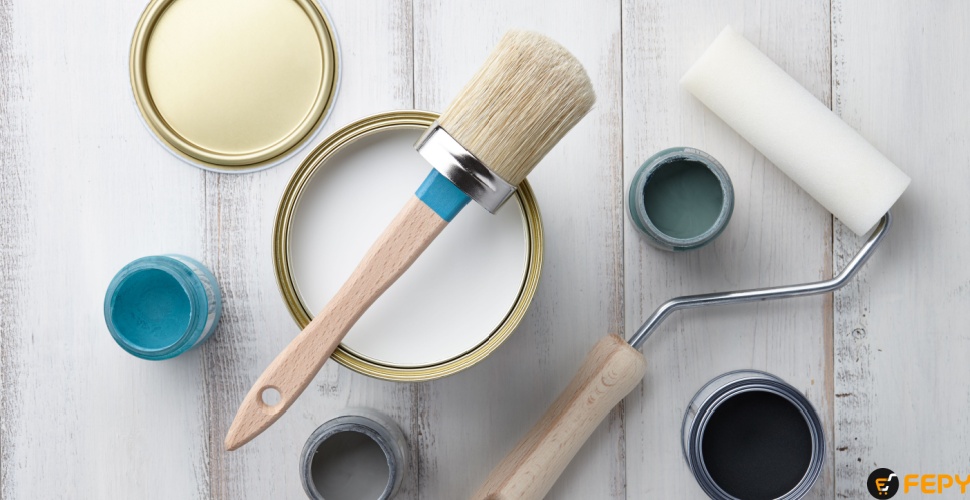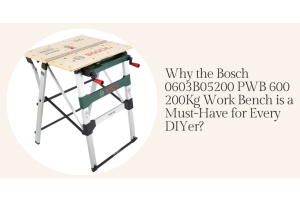Paint Roller vs Brush: Which Should You Use?

The key to a flawless paint job is the paint and the tools you choose. The reigning champions of the painting world are paint rollers and brushes. So, how do you know which one to use? Let's break down these two essential tools' advantages, disadvantages, and secrets. Get ready to make your next painting project shine!
Paint Roller vs. Brush: 10 Key Differences

When choosing your painting weapon, several factors come into play. Let's compare these trusty tools across ten important parameters:
1. Application Method
Paint rollers are masters of vastness. A roller is like a tireless machine built for conquering wide swaths of walls or ceilings. Their design empowers them to apply paint rapidly, leaving a smooth, consistent coat in their wake.
Think of applying paint with giant, efficient strokes instead of painstakingly filling in small sections at a time.
On the other hand, paint brushes are the precision specialists. While a roller dominates open territory, a brush is a weapon for tight spaces or intricate details. "Cutting in" borders, tracing delicate trim, or painting intricate moulding is the brush's forte.
Think about it as a surgeon's scalpel rather than a broadsword where control and accuracy are paramount.
2. Coverage
A roller's secret lies in its nap (the fuzzy outer layer), which soaks up a generous amount of paint. Every spin delivers that paint evenly across a substantial area.
Rollers are the champions of efficiency when dealing with expansive, smooth surfaces.
Brushes, in contrast, work with smaller amounts of paint. While this makes them less efficient for vast surfaces, it grants incredible control.
Think about the difference between colouring with a wide marker versus a fine-tipped pen – a brush provides that level of detail.
3. Detail Level
A brush's true strength lies in its bristles. They allow for precise control, letting you paint tight corners, trace delicate lines, and carefully coat intricate moulding. Selecting the right brush is crucial.
Natural bristles excel with oil-based paints, stains, and varnishes. In contrast, durable synthetic bristles are the ideal choice for latex paints.
Angle sash brushes are perfect for tackling trim, while trim brushes easily handle larger areas like walls.
And here, the size matters! Smaller brushes excel in tight spaces, while larger ones offer more coverage.
On the other hand, rollers are built for coverage. Rollers apply paint quickly and evenly on large, flat surfaces.
However, this emphasis on coverage means they can need help with intricate details or tight corners. This is where brushes offer an advantage.
4. Material
Rollers are made from foam, plastic, fabric, etc.
Foam rollers, made of a synthetic sponge-like material, are excellent for smooth surfaces or applying protective coatings. The density type will determine how fine of a finish you can achieve.
Fabric rollers are the way to go for textured surfaces. They're made from woven or knitted fibres, and the nap length is crucial – longer naps handle rougher surfaces. In contrast, shorter naps ensure a smooth finish.
Brush's bristles can be natural or synthetic. Brush bristles play a huge role in performance. Classic natural bristles, often made from animal hair, are the traditional choice for oil-based paints, varnishes, and stains.
However, modern synthetic bristles (like nylon or polyester) have become dominant for latex-based paints. They are durable, easy to clean, and offer excellent precision and control for cutting in and tackling detailed work.
5. Viscosity
A roller's real strength comes into play with thicker, more viscous paints. Their nap acts like a sponge, swiftly absorbing and distributing a generous amount of paint across those large surfaces.
Consider their efficiency when applying a substantial coat to walls or big furniture pieces.
Brushes are flow control specialists. When paint thins out, brushes shine. Their bristles allow you to manage the flow of the paint with precision, making them the choice for detail work and tighter areas.
Additionally, different brush types excel with specific viscosities: synthetic bristles master latex paints, while natural bristles remain the best for handling oil-based paints, varnishes, and stains.
6. Shear Rate

Shear rate is more than a fancy term - it directly impacts how evenly your paint lays down. It's the stress the paint undergoes as you roll or brush it on. Understanding how your tools affect these matters to avoid uneven finishes is important.
Rollers apply paint with varied shear depending on how thick the coat is and how fast you roll. Too slow and thick can cause sagging and unevenness. Faster rolling and a lighter coat tend to smooth things out.
For brushes, pressure is key. The way you brush changes the shear rate. Heavy, slow strokes result in a lower rate, which can leave brush marks.
Faster, lighter strokes increase the shear rate, promoting smooth, even coverage. Picking the right brush for your paint type also helps to create even results.
7. Time-Dependent Viscosity
Some paints are trickier than others, and their thickness changes over time when you apply force by brushing or rolling. This is called thixotropy.
Imagine a paint that thickens at rest but smoothly flows when you spread it – that's how it helps avoid drips but still levels out for a smooth finish.
Understanding thixotropy helps you pick the right tool. Rollers, with their broad application, handle those changes in viscosity well. Brushes are more suited to paints with consistent thickness, where you can control the flow with your brushstrokes and technique.
8. Cleaning and Maintenance
Cleaning up is part of the painting game, and brushes are slightly disadvantaged. Their bristles trap paint, so they need a thorough cleaning after each use to stay flexible and effective.
A hardened brush can ruin your next paint job with clumped paint and stiff movement.
Rollers offer convenience if you paint in stages or use the same paint over multiple days. Their nap can hold paint quickly without drying out, meaning less frequent cleaning breaks.
When it is time to clean them, the process is often simpler than with brushes.
9. Cost
Price tags on rollers and brushes vary widely. Rollers are often the more budget-friendly option for big jobs, especially those basic foam rollers. But don't dismiss a quality brush – even a pricey one can last for multiple projects if properly cared for.
Always think about the value factor. It's tempting to choose based on price alone but consider the type of job. A large room painted with a cheap brush that sheds bristles will cost you time and frustration. Investing in the right tool for your project saves hassle down the line.
UAE Market Tip: Fepy, the leading e-commerce store, often offers surprisingly good deals on quality brushes or roller sets. Compare prices online for top brands and get your best tools.
10. Usage
Think of painting tasks in two categories: broad coverage and fine details. Rollers conquer vast, smooth areas like walls and ceilings with speed. Brushes win regarding precision work like trim, moulding, or anything intricate.
Rollers aren't just for flat walls. Different naps can create interesting effects! Fluffy rollers can add texture to rougher surfaces, adding another dimension to your project.
Knowing your brush types comes in handy. Angle sash brushes are perfect for corners, while wider flat brushes are great for trim work. Natural bristles with oil-based paints, synthetic with water-based paints – it's a simple rule that makes a big difference.
Paint Roller vs Brush: Comparison Table
| Parameter | Paint Roller | Brush |
| Application Method | Broad strokes, ideal for large, open surfaces | Precise strokes, great for intricate spaces and details |
| Coverage | Covers large areas efficiently, using more paint per stroke | Covers smaller areas, using less paint per stroke |
| Detail Level | Can struggle with intricate painting/cutting in | Excels at detail work, trim, corners, and fine lines |
| Material | Nap (foam or fabric) of varying density | Bristles (natural or synthetic) in various shapes/sizes |
| Viscosity | Best with thicker paints for efficient holding | Better with thinner paints for controlled flow |
| Shear Rate |
Speed and coat thickness impact smoothness |
Pressure and stroke style impact smoothness |
| Time-Dependent Viscosity |
Handles "thixotropic" paints well |
Better suited to paints with consistent thickness |
| Cleaning & Maintenance |
Less frequent cleaning can be stored for short periods with paint |
Requires cleaning after each use to prevent hardened bristles |
| Cost |
Generally, less expensive |
It can be more expensive, especially for high-quality brushes |
| Usage | Walls, ceilings, large surfaces | Detail work, trim, cutting in, smaller areas |
FAQs
Q. Is it better to paint with a brush or roller?
It depends on the job! Brushes excel with detail work and cutting in edges, while rollers dominate large areas for speedy painting.
Q. Is it better to paint trim with a brush or roller?
Brushes are the top choice for trim. Their precision lets you paint into tight corners and create clean lines – something rollers struggle with.
Q. What are the disadvantages of a paint roller?
Rollers work best in open spaces, struggling with corners and intricate details. They also leave a slightly textured finish compared to the smoothness of the brushwork.
Q. Do professional painters use rollers?
Absolutely! Rollers are a professional's go-to for walls and ceilings due to their speed and efficient coverage. However, pros still keep brushes handy for the detailed work a roller can't handle.
Paint Roller vs Brush: The Final Verdict
There's no clear-cut "winner" between rollers and brushes. Each shines in different tasks. Rollers conquer large areas with speed and evenness, perfect for walls and ceilings. On the other hand, brushes ensure details like trim and edges look flawless.
Adapt the hybrid approach. For the best paint job, you may need both tools! It's common to start with a brush for tight areas and edges, then switch to a roller to tackle the wide, open spaces. This combo delivers speed, precision, and a beautiful final product.
You can get premium paint rollers and brushes at the most cost-effective price from FEPY. You can compare different brands and prices and buy the best product. Visit now and explore the exclusive categories.




